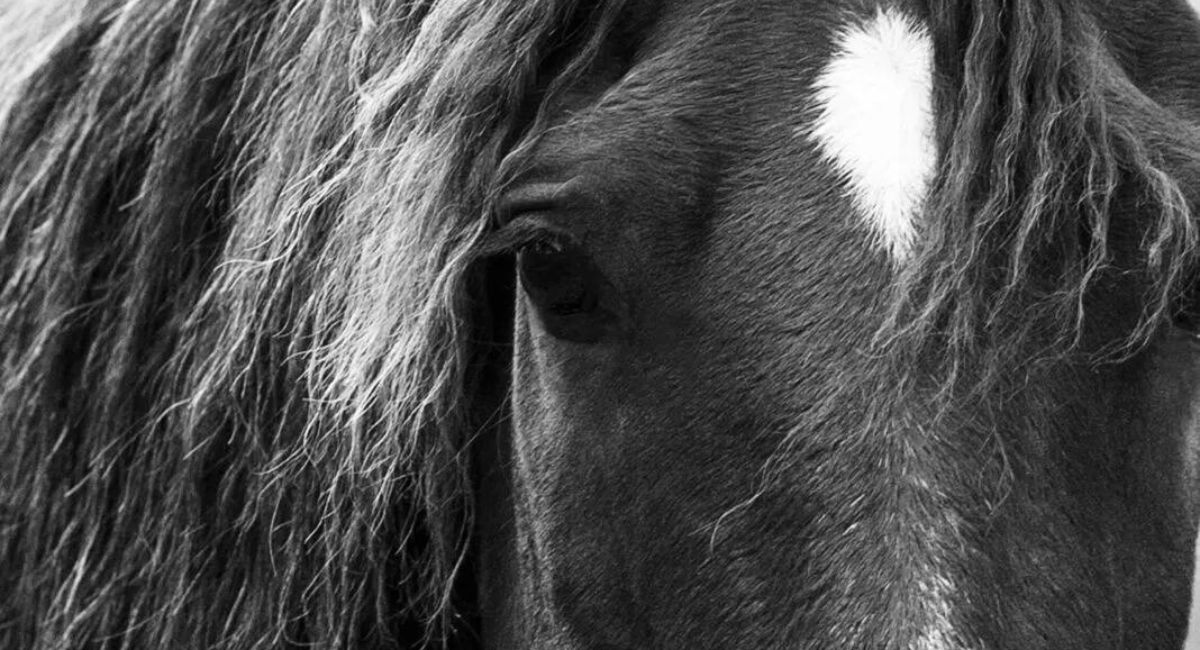Menu

Do you know what it means when your horse swishes its tail, or when its eyes widen? These can actually be clear signs of discomfort.
Many reactions, where the horse exhibits unusual behavior, can of course be due to various factors. It is therefore important that you always consider the specific situation. Is there something bothering your horse?
It could be anything from insects to improperly fitted equipment. Always remember to investigate the underlying cause of the horse's behavior.
Conflict behavior occurs when the horse uses its body to tell you that it is experiencing discomfort in a given situation. This may happen because it cannot do what it wants, or it is torn between its options. In nature, it would probably be able to remove itself from the discomfort, but this can be more difficult when handled by humans. This creates conflict behavior, for example, when it cannot escape what scares it, or if it cannot seek food when hungry.
We often - more or less unconsciously - send mixed signals to our horses. This contributes to conflict behavior in the horse. Always intervene as soon as possible if you see conflict behavior in your horse! It unnecessarily stresses the horse when cortisol levels rise, and it poses a risk of, for example, gastric ulcers.
In the end, prolonged conflict behavior can lead to learned helplessness in your horse, also called shutdown. It has learned that its signals are not being heard, and thus it will shut down. That's why it's important for you to respond and listen to your horse.
Read also: Veterinarian Michael Sinding: Too many horses are misunderstood
This could obviously be due to an insect annoying your horse. However, if this is not the case, and your horse repeatedly swings its tail from side to side - either during handling or riding - it may be a conflict marker that you should pay attention to. If the horse feels that tail swishing is not enough, it may often be followed by lifting its hind leg, preparing to kick.
The muzzle is also a big part of the horse's way of communicating and telling if it is experiencing pain or discomfort. If the horse's muzzle becomes pointed, and it protrudes its upper lip more than the lower lip, you should react. If this happens during riding, the horse will often also open its mouth. Generally, the horse's muzzle is extremely sensitive, and it senses and expresses many things with it.
If you can see the white around the iris in your horse's eyes and it is not normally visible, and the eyes become more triangular, you should also react. Often the horse will show a pain face if it is in pain, and here the eyes are one of the things you can look out for.
Read also: Will the Helgstrand Case change horse welfare in Denmark?
You have probably seen a horse snorting, causing its nostrils to expand and become tense. If this does not happen while your horse is, for example, panting, you should also react. Under normal circumstances, your horse's nostrils should be round, but if it is tense, the nostrils will become more squared.
Horses do not yawn for the same reason as humans, and in fact, it can be the horse's way of trying to cope with stressful situations.
When your horse tosses its head up and down or back and forth, it could of course also be due to insects or equipment that irritates it, but if not, it can also be a conflict marker.
However, it is also worth investigating whether your horse suffers from head-shaking syndrome.
The horse is a flight animal. If it experiences enough pain, frustration, or discomfort, it will do everything to get away from the situation. Therefore, it will likely begin to buck, rear, or flee if it cannot find another way out, or if you do not respond to the earlier conflict markers. Often the horse will have shown several conflict markers before resorting to bucking, rearing, or fleeing. But if the rider does not recognize these conflict markers, it may seem as if the horse bucks or rears out of the blue.
Read also: Flexibility exercises for the older horse
Sources:
Animal Protection: Conflict Behavior in Horses
Agria Pet Insurance: Natural Behavior of Horses
Salfarm: Your Horse's Face Reveals Pain